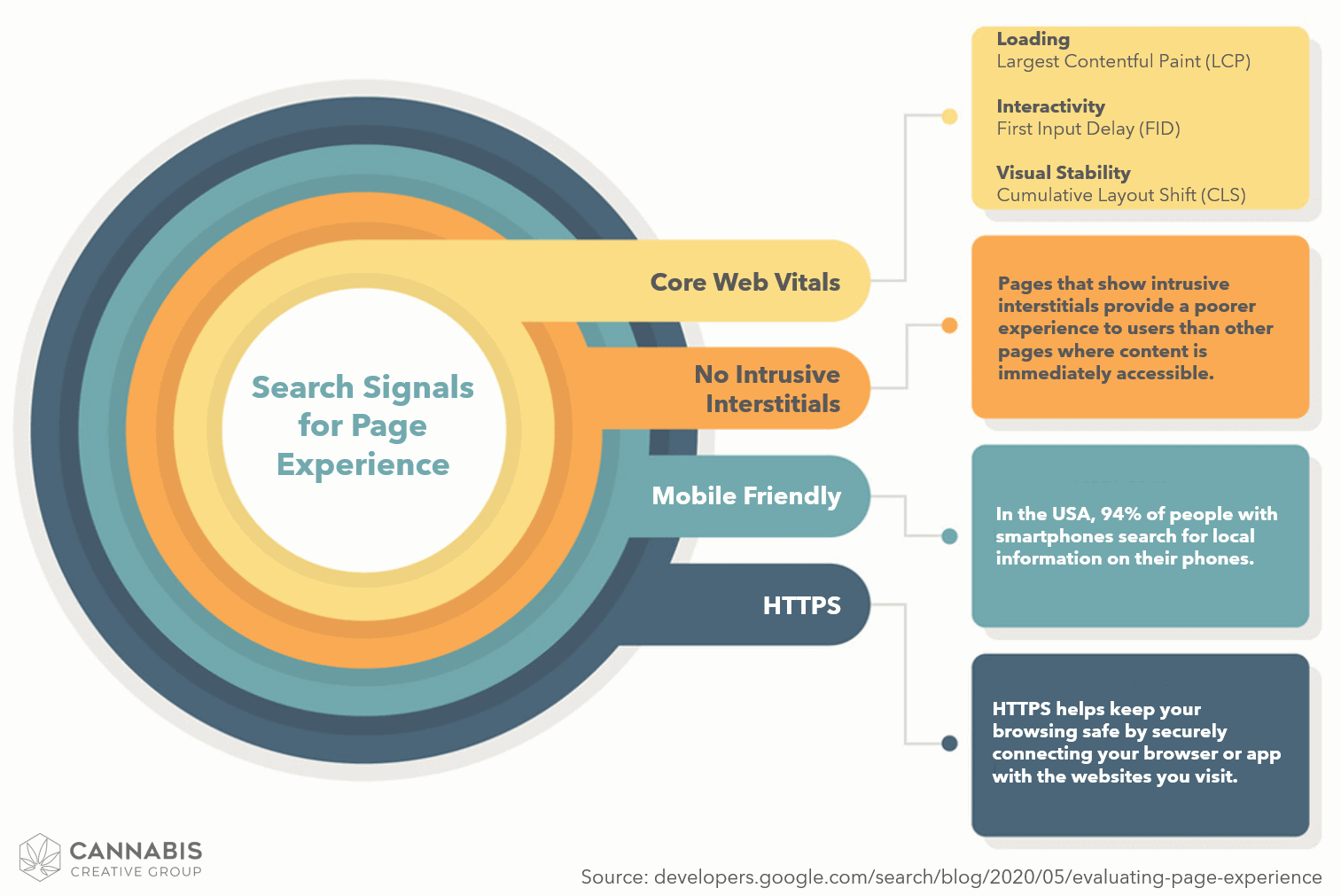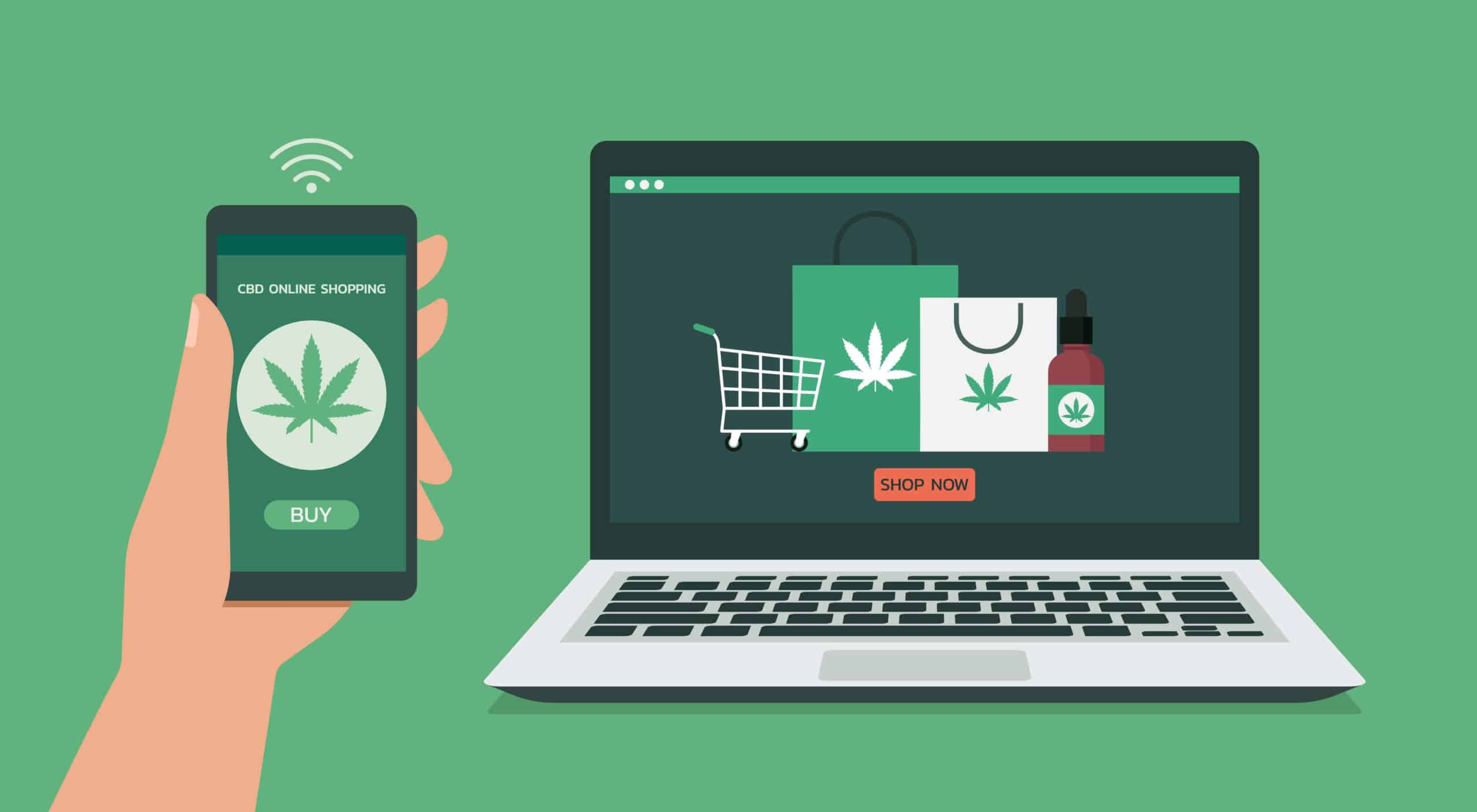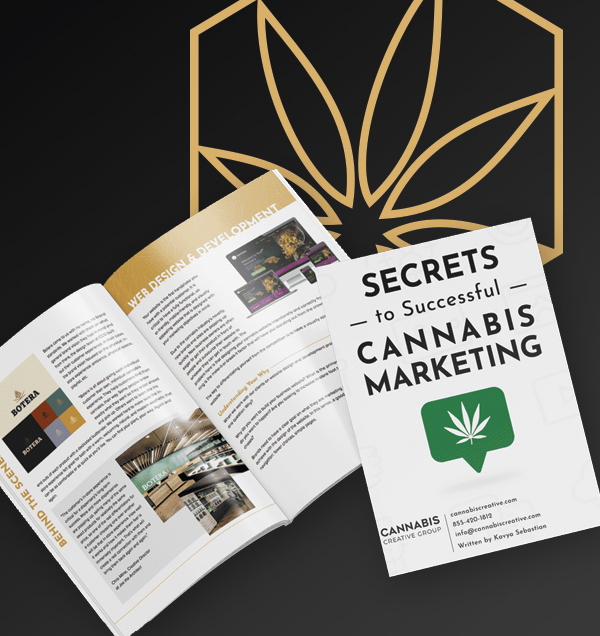At Cannabis Creative, we advocate for fast page speeds for our clients. And we’re not alone as 77% of agencies believe that a bad website user experience is a weakness.
We contend that page speed is one of the most important aspects of cannabis SEO, right behind the quality of your content and backlinks. Look at it this way: all things being equal, if your competitor’s website loads faster than yours, they’ll outrank you. Potential cannabis buyers will see your competitor’s listings ahead of yours.
Why does page speed matter for cannabis websites?
Back in July 2018, Google confirmed the “Speed Update” was rolled out. Page speed, which is the amount of time it takes for a page on your website to fully load, impacts your organic presence for two main reasons:
1. A page that loads fast means the user has a better on-page experience.
2. Page speed is a Google ranking factor.
Cannabis websites often have lots of beautiful, high resolution images. Sometimes videos too. These look great, but their file size can detract from the page experience. The most common factors that affect page speed are:
- Heavy CSS and JavaScript
- Inefficient coding
- Large file sizes (images are common offenders)
- Poor server response time
- Using plugins
- Video and animation

61% of people won’t return to a slow-loading website
You have just a few seconds to ensure your website visitors stick around. If they become frustrated, they’ll back out and go elsewhere. Don’t believe us? According to Google, 61% of users are unlikely to return to your site on mobile if they had trouble accessing it, and 40% visit a competitor’s site instead.
Let’s say you run a dispensary. The faster things load on your website and the better the experience users have, the more likely they’ll be to ultimately order from your online menu. And the better you rank, the more visibility in search results you’ll get for people searching for dispensaries.
Core Web Vitals for assessing cannabis page experience
47% of users expect a maximum of two seconds loading time for an average website. Coincidentally, a Google Webmaster video happens to state that “two seconds is the threshold for ecommerce website acceptability.”
You might think a two-second load time is unattainable, but it can be done.
To meet the expectations of your site visitors, it’s critical to understand how page speed plays a part in Google’s assessment of the page experience. Google has a set of metrics called Core Web Vitals, which is a hot topic in cannabis SEO these days. Related to speed, responsiveness, and visual stability, these metrics are measured alongside a few other signals (no intrusive interstitials, mobile friendly, and HTTPS) to evaluate page experience.

Whether your business is a dispensary, CBD retailer, medical cannabis clinic, or otherwise, you need to meet the thresholds for Core Web Vitals’ metrics. Below you’ll see the recommended load time targets.
- Largest Contentful Paint (LCP) measures loading performance. LCP marks the point in the page load timeline when the page’s main content has likely loaded.
- First Input Delay (FID) measures interactivity. FID quantifies the experience users feel when trying to first interact with the page.
- Cumulative Layout Shift (CLS) measures visual stability. CLS quantifies the amount of unexpected layout shift of visible page content.


Desktop vs. mobile: which is more important for page speed?
In 2020, Google announced mobile first indexing for the web, which means the search engine now crawls and indexes your website with a smartphone agent. As such, focus on your website’s experience on mobile.
When Google used to evaluate the relevance to someone’s query by looking at the desktop version of your website. But since “the majority of users now access Google Search with a mobile device,” the engine now ranks your site based on the mobile experience.
As further evidence why mobile is more important than desktop, 85% of adults think that a company’s website when viewed on mobile should be as good or better than the desktop version.

6 ways to improve the page speed of your cannabis website
Slow-loading websites cost retailers $2.6 billion in lost sales each year. Here are a few things you can do to improve page speed and maximize sales:
1. Avoid pop-ups: Sure, some cannabis businesses need the pop-up confirming the user’s age. Aside from that, many users find pop-ups annoying, and a pop-up is one more thing that your page needs to load.
2. Change the order of page components: Page content should come first in the source code, followed by CSS or JavaScript that may be required for display.
3. Compress images: Reduce the file size of your images by compressing them as small as possible without losing quality.
4. Optimize CSS and JavaScript files: Excessive CSS and JS means more data to load. Consolidate and minimize these files by eliminating redundancies.
5. Refrain from using animation: Video and animations are flashy but are often culprits for slow-loading websites. Use static imagery instead.
6. Use PageSpeed Insights to measure speed: Powered by Core Web Vitals, PageSpeed Insights suggests performance optimizations so you can work to make your page load faster.
